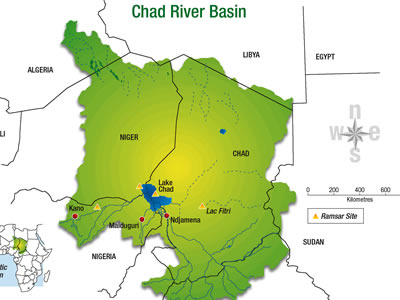By Mohammed Dahiru Aminu
Geologists like me are often confronted by curious, probing individuals on issues that border on geology of the Chad Basin area of Nigeria, and with a particular interest, its oil potentials. Like a doubting Thomas, skeptics might want to make out the views of us, geologists, on why full exploration and production (E&P) activities are yet to commence in the Nigeria’s sector of the Chad Basin.
To take it from the needed essential view, one might like to lift up the veil of gibberish in order to freely probe into the geology of the Chad Basin, as it affects, whether or not the possibility of oil occurrence. It is only by inquiring on the basic, yet elemental geologic dynamics of the Chad Basin area of Nigeria that one can be able to say for certain if the “magic parameters” for oil occurrence in that basin is fully met.
The magic parameters for oil occurrence in any basin, as we were taught in undergraduate petroleum geology are the concurrent existence of these factors: the source rock, the reservoir rock, migration pathway, geothermal temperature and trap.
The stratigraphic sequence of the Chad Basin ensues from the unconformable deposition of the Cenomanian Bima Sandstone over the Pre-Cambrian Basement Complex rocks. Atop the Bima Sandstone is the Turonian Gongila Formation, succeeded by the Senonian Fika Shales, which is also in turn succeeded by the Maestrichtian to Pleistocene Gombe Sandstone, Keri-Keri Formation and Chad Formation.
The Chad Basin, where only one-tenth of its area lie in Nigeria offer possible source rocks, reservoir rocks and migration/structural pathway. Fika Shales is a likely source rock, and its immediate succession, Gombe Sandstone, could serve as a tremendous reservoir rock. The large scale Cretaceous folds in the form of anticlinal and synclinal folds—thanks to borehole data from Maiduguri—could make encouraging traps for occurrence of oil. More so the depth at which Gombe Sandstone is supposedly located around the Lake Chad area could give enough geothermal temperature of 120-150 degrees centigrade which supports oil formation.
But the challenge is: is there Gombe Sandstone? It seems to the geologist—courtesy of available geophysical data—that all parameters for the occurrence of oil in the Chad Basin area of Nigeria has been met, but the challenge is that empirical evidence gathered from drilling activities is a somewhat falsity to the existence of Gombe sandstone.
In Maiduguri and environs, atop the Fika Shales, borehole data discerns a wholesome availability of Gombe Sandstone. But still in Maiduguri and environs, Gombe Sandstone couldn’t have satisfied the parameters for the occurrence of oil. Previous scientific studies agree that at the depth at which Gombe sandstone is discernible in Maiduguri and environs, oil couldn’t have formed due to the unsatisfactory geologic factors abound in that spatio-temporal environ.
The oil producing window at which oil could be formed at a temperature of 120-150 degrees centigrade, amidst other oil-formation parameters, can only be met as one goes farther from Maiduguri towards the Lake Chad. Unfortunately however, more than a dozen wells is reported to have been drilled by the federal government of Nigeria in the area, and all the wells so drilled proved unluckily to the near-inexistence of Gombe Sandstone around the Lake Chad area; an area no doubt that if Gombe Sandstone could be struck, oil is struck!
So where is Gombe Sandstone? Why is it seen in other places—where it is not much needed for it is un-bearing of the black gold, and why can’t it be hit in the Lake Chad area—where if found, is thought to have satisfied all relevant conditions for oil accumulation, and so would definitely contain oil?
The answer that has remained ever unanimous with geologists is that Gombe sandstone having been best developed in the southwest part of the basin, where 350metres of it is reported thins out towards the Lake Chad area.
Gombe Sandstone thus thins out towards the Lake Chad area, where if found, is supposed to be productive and economical. Little wonder why virtually all drilling cores only showed thin layers of mudstones atop the Fika Shale; that is thought to symbolize and speak for the Gombe Sandstone.
Beyond that, although drilling evidence shows the near inexistence of Gombe Sandstone in the Lake Chad area, some geologists are still hopeful that somewhere somehow if drilling continues around the Lake Chad area, a large chunk of the Gombe Sandstone rock will be hit; oil will be hit.
For a geologist like me, the challenge remains: to find Gombe sandstone! If we find Gombe Sandstone in the Lake Chad area, then we can safely say that we have found oil for Gombe Sandstone in the Lake Chad area should and must contain oil. If we however can’t find Gombe Sandstone, we can’t find oil. This therefore is our deepening dilemma: there is oil only if there is Gombe Sandstone in the Lake Chad area.
Mohammed Dahiru Aminu is a geologist, who wrote from Yola, Nigeria. He can be reached at mohd.aminu@gmail.com



